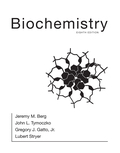
Concept explainers
Interpretation:
The reason forhuman beings to not produce energy by photosynthesis, however, this process is critical to our survival needs to be explained.
Concept Introduction:
Photosynthesis is a process that harnesses the energy in sunlight to make sugar from water and carbon dioxide in the presence of a green pigment called chlorophyll.
Explanation of Solution
Symbiosis between animals or heterotrophic protist and algae are common in nature, the prominent examples include the zoochlorellae of Hydra viridis or dinoflagellates (zooxanthellae) of corals and the many different species of algae found in ciliates. A more curious kind of symbiosis is found among the sacoglossanmolluscs (marine slugs) from the Plakobranchoidea. These animals establish a symbiosis with only a part of their algal partners and produce energy by photosynthesis.
Human beings do not produce energy by photosynthesis because human beings do not have a green pigment and it lies in considering the energy requirement of a large active multicellular animal such as a human being. Every day an adult human requires energy according to its own body weight in a molecule called ATP, which stores the chemical energy released from the oxidation of glucose.
To produce roughly 60kg of ATP, a typical adult human, therefore, requires around 700g of glucose per day. Given the maximum known rates of photosynthesis in higher plants and assuming that the surface area of an adult human skin is around 1.6 m2, a human with green skin could produce a highly disappointing 1% of the daily demand for glucose through photosynthesis. So to meet the energy demands, a photosynthesizing human would have to have a lot more skin.
Human beings do not produce energy by photosynthesis because human beings do not have a green pigment chlorophyll and havea higher energy requirement. But plants and other organisms produce energy by photosynthesis.
Want to see more full solutions like this?
Chapter 19 Solutions
EBK BIOCHEMISTRY
- Modified TRUE or FALSE. Write the word TRUE if the statement is correct. If the statement is false, write the incorrect underlined word/s and indicate the correct word/s to make the statement true. During photorespiration, Rubisco acts as carboxylase that catalyzes the reaction of RuBP and oxygen to form phosphoglycolate and PGA in the chloroplast.arrow_forward20. A hoax, perhaps? The citric acid cycle is part of aero-bic respiration, but no O 2 is required for the cycle. Explainthis paradox.arrow_forwardTrue or False? The following is the correct sequence for the movement of electrons during the light-dependent reactions of plants: A) P680 --> P700 --> water --> NADP+ In cellular metabolism, photosynthesis uses solar energy to produce energy-rich organics; respiration breaks down energy-rich organics to synthesize ATParrow_forward
- Photosynthesis Purpose? Why does a plant need water? Why does a plant need CO2 Why does a plant produce O2?arrow_forwardOxygenic photosynthesis in eukaryotes (in the chloroplasts of green algae and green plants) consumeswhich of the following substrate molecules (to generate glucose, water, and oxygen product molecules)?A. C12H22O11 + H2OB. C6H12O6 + 6O2 + 6H2OC. 6CO2 + 12H2OD. C6H12O6 + C6H12O6E. 6CO2 + 12H2Sarrow_forwardPls help ASAP, thank you! "Regulation of metabolic pathways most typically occurs at enzyme steps that are"arrow_forward
- Question: Start with a photon of sunlight and a carbon atom in a molecule of carbon dioxide in the atmosphere: model/diagram their pathway from that starting point to their final destination as a glucose molecule that is used for energy in a cell in the plant root. Following your diagram/model, provide a written explanation for what your diagram/model depicts. Make sure both your model and explanation are clear, concise, and have the appropriate level of detail to clearly demonstrate you understand photosynthesis, cellular respiration, and the movement of mass and energy in plants. hence- recreate the diagram on pic 29 , but using the information from this problem. Then, when you get to cell respiration, explain what happens, and how carbs get converted to lipids in pic12arrow_forwardModified TRUE or FALSE. Write the word TRUE if the statement is correct. If the statement is false, write the incorrect underlined word/s and indicate the correct word/s to make the statement true. Triose phosphate is considered as the net product of the Calvin cycle of photosynthesis, which is then utilized for the synthesis of the end products that are glucose and starch.arrow_forwardWhy bother to eat? What are the three primary uses for cellular energy?arrow_forward
- True or False? Electrons after complex III are then sent immediately to complex IV. (during ETC in cellular respiration)arrow_forwardBioKemi!! Make a theoretical calculation of how many ATP molecule of acetyl-CoA to Carbon dioxide and water if the entire proton gradient across the mitochondrias inner membrane can be used for ATP production and when the ATP synthase has 15 c-subunits? All steps in the calculations must be reported Hand written solution otherwise down votearrow_forwardPhotosynthesis and Respiration: Explain the details of the light-independent reaction. Make sure to explain the role of ATP and NADPH and where this reaction takes place.arrow_forward
 BiochemistryBiochemistryISBN:9781305577206Author:Reginald H. Garrett, Charles M. GrishamPublisher:Cengage Learning
BiochemistryBiochemistryISBN:9781305577206Author:Reginald H. Garrett, Charles M. GrishamPublisher:Cengage Learning
